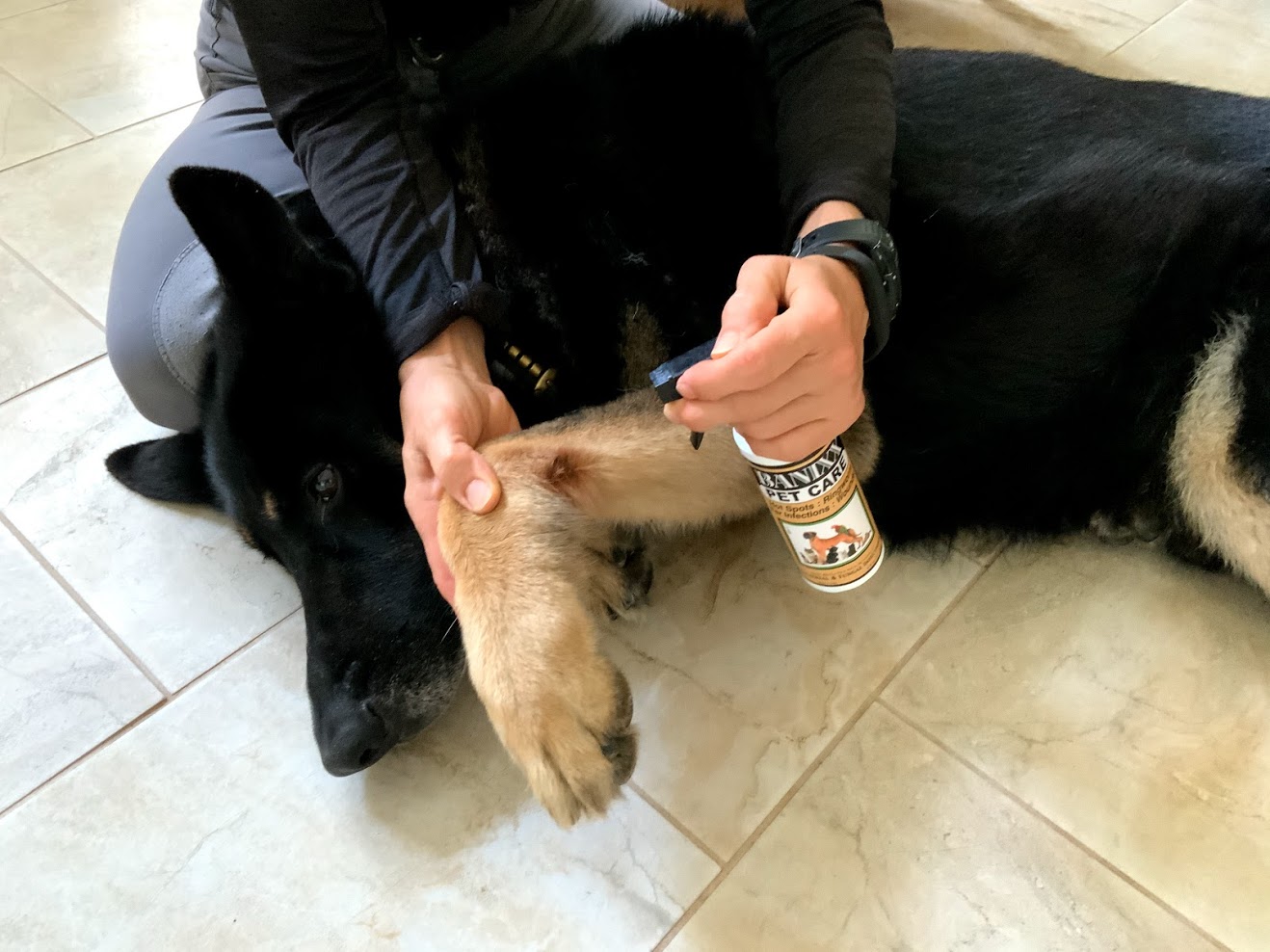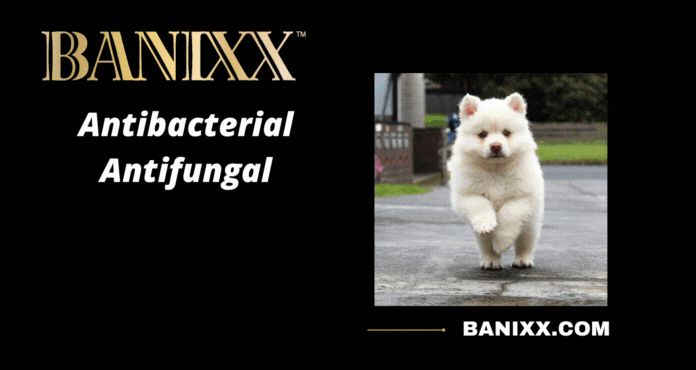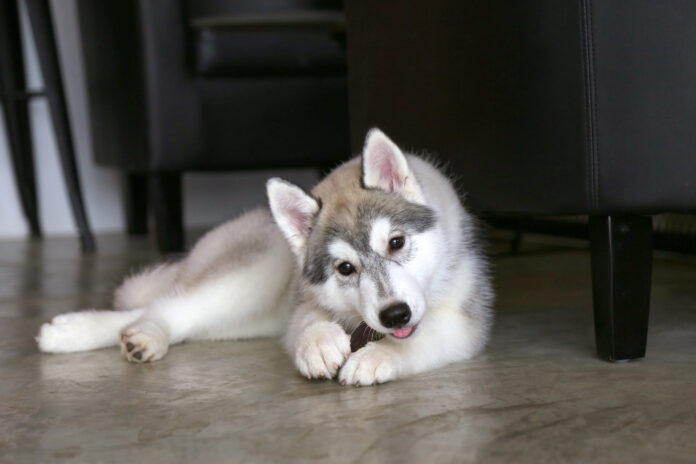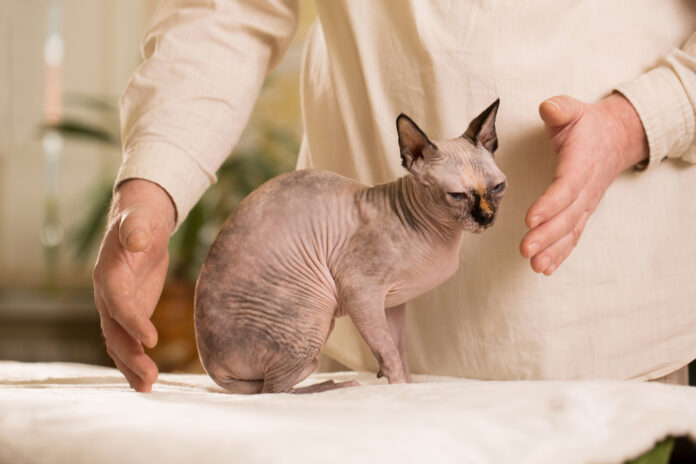How to Identify and Treat Ringworm and Hot Spots in Dogs

As much as we love our furball best friends, there’s nothing quite like the sounds of a slurping tongue in the dead of night to give us the icks! On closer inspection, though, that quickly turns to concern when you notice the source of your pup’s discomfort: a visible patch of skin – often red and raw, always bald, never good. Uncomfortable at best, painful at worst, the question now is “What is it?” It could be hot spots; it could be ringworm. Either way it needs to be correctly identified and treated… so that your pup can get back to health, and you can get back to slurp-free sleep!
Your first stop in the fight against angry patches – be they red, raw hot spots or the balding beginnings of ringworm – is to identify which of the two are keeping you and your pup up.
It’s a hot spot
- Is your poor pup feverishly chewing at the area?
- Is it red, angry, and moist looking with some pus?
You are probably looking at a hotspot.
It’s ringworm
- Does your dog have a visible bald area, the hair all but completely gone in that particular spot, but it doesn’t seem to be all that bothersome?
- Can you see yet another small bare spot brewing around the same area?
In this case, ringworm is the likely culprit.
How to treat a hot spot
 To treat a hot spot, provide immediate relief by applying a quality antimicrobial like Banixx Pet Care. This non-greasy, non-sticky, leave-on solution has no smell or burn to alarm your pup. Simply apply two to three times daily, sit back and watch the magic happen.
To treat a hot spot, provide immediate relief by applying a quality antimicrobial like Banixx Pet Care. This non-greasy, non-sticky, leave-on solution has no smell or burn to alarm your pup. Simply apply two to three times daily, sit back and watch the magic happen.
Of course, prevention is better than cure, so you now need to ask yourself: where did the hot spot come from and how do you prevent it from rearing its angry redness again?
Common triggers for hot spots include:
- Fleas: Check your flea prevention program to make sure you’re up to date. A flea bite can quickly spark off a hot spot.
- Fillers: Inspect your dog’s food label to assess the “fillers” it contains. Fillers like soy and corn can lead to a food allergy in your canine friend, one of the leading causes of hot spots in dogs.
- Fowl: Likewise, some dogs don’t handle poultry-based products well – particularly chicken – so keep an eye open for that.
- Fur: If your dog is thick-coated, matted hair can very quickly lead to a hot spot; it may be time for a visit to the groomer!
- Fun – or lack thereof: Long periods of boredom or stress may lead to licking, which leads to hot spots. Scan your schedule and make some time every day to alleviate your pup of any undue blahs!
How to treat ringworm
As icky as it may seem, ringworm on dogs is a fairly common fungal skin infection. A small, round hairless patch of skin that may also have scabs, ringworm typically doesn’t cause itching or pain, but it is highly contagious and can result in extensive hair loss if left untreated.
Ringworm often flourishes in young puppies due to their immature immune systems. Similarly, older dogs or those with an immunocompromised system may fall prey to this annoying malady. And remember, you too can get ringworm! (Now there’s a case of the icks you won’t quickly forget!)
Banixx Pet Care is a superlative antifungal solution that will stop ringworm in its tracks, but there are also some serious environmental measures that need to take place:
- Ringworm is spread by spores not visible to the human eye; these spores must be removed for quicker, solid results.
- To do this, it’s vital that you sanitize all dog bedding (wash in bleach) and disinfect anywhere your pup likes to relax. A 50-50 solution of apple cider vinegar is recommended for surfaces where you can’t use bleach.
Once you know what you’re dealing with and have the right treatment and preventative measures on hand, both hot spots and ringworm can be simple to treat. But it is important to find the source to avoid future outbreaks and keep your pup comfortable.

AUTHOR PROFILE

Animal Wellness
Animal Wellness is North America\’s top natural health and lifestyle magazine for dogs and cats, with a readership of over one million every year. AW features articles by some of the most renowned experts in the pet industry, with topics ranging from diet and health related issues, to articles on training, fitness and emotional well being.




